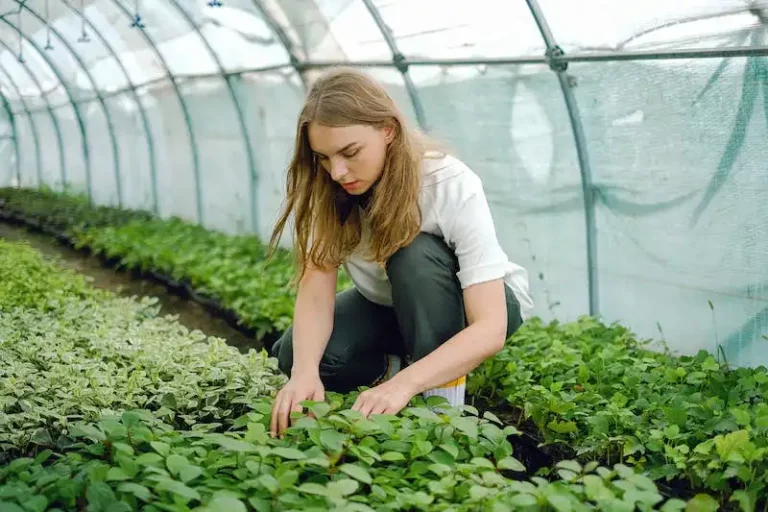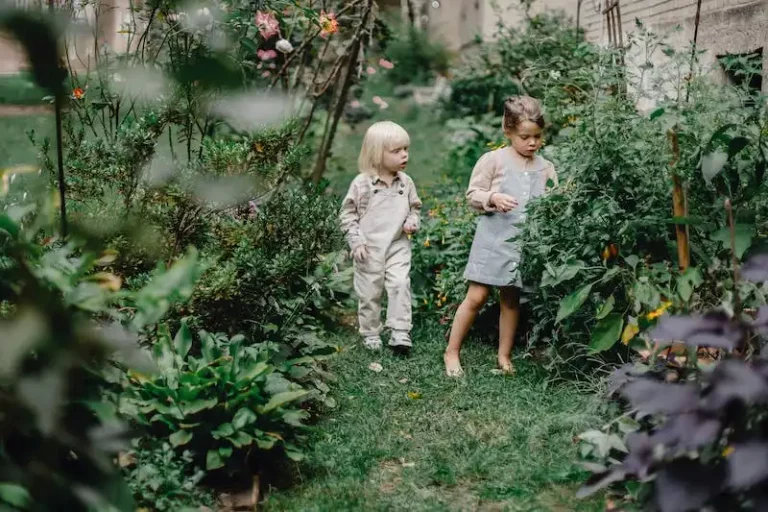If you’re looking for a unique and eye-catching addition to your plant collection, Cephalocereus senilis, also known as the Old Man Cactus, is worth considering. With its soft, white hair-like spines, this column-shaped cactus is sure to grab attention. However, managing the Old Man Cactus requires some specific tips and tricks to ensure its healthy growth.
When it comes to the foundation of soil for your Cephalocereus senilis, a mix of perlite and sand works best. This combination provides excellent drainage and prevents water retention, which can lead to root rot. Because the Old Man Cactus is sensitive to frost, it’s best to use a well-draining soil mixture.
When it comes to sunlight, the Old Man Cactus prefers bright, indirect light. It’s best to place it near a window where it can receive ample light throughout the day. However, be cautious of exposing it to direct sunlight, as it can cause sunburn and damage to the plant.
When it comes to watering, the Old Man Cactus requires a tepid and careful approach. Water sparingly, allowing the soil to dry out completely between waterings. Overwatering can lead to root rot and other conditions that can harm the plant’s health. In spring and summer, water every few weeks, and decrease frequency during the cooler months.
To propagate the Old Man Cactus, you can take cuttings from the top of the stem. Be sure to let the cuttings dry out and callous for a couple of days before planting them in a well-draining soil mix. You can also separate the pups or offsets from the base of the plant and root them to grow new individual plants.
When it comes to pests and diseases, the Old Man Cactus is relatively resistant. However, keep an eye out for common cactus pests such as mealybugs and scale insects. These can be managed with regular inspections and a gentle wipe-down or spray with lukewarm soapy water.
In terms of maintenance, the Old Man Cactus is relatively low-maintenance. It prefers average room humidity and can tolerate slightly dry conditions. Fertilize with a balanced cactus fertilizer once every few months, following the package instructions for the appropriate dosage. However, be cautious not to over-fertilize, as it can lead to an unhealthy appearance.
In conclusion, Cephalocereus senilis, or the Old Man Cactus, is a fascinating and striking cactus to grow. Proper care and attention to its specific needs, such as well-draining soil, careful watering, and appropriate sunlight, are essential for its health and longevity. With its unique appearance and relatively low-maintenance nature, the Old Man Cactus can be a captivating addition to any plant lover’s collection.
How to Grow and Care for Old Man Cactus Indoors
Cephalocereus senilis, commonly known as the Old Man Cactus, is a unique and fascinating plant to grow indoors. Its cultural importance and sometimes comical appearance make it a popular choice for plant enthusiasts. This article provides a comprehensive guide on how to successfully grow and care for Old Man Cactus indoors.
Description and Cost
Cephalocereus senilis, also known as the Old Man Cactus, is a columnar cactus with stemmed columns covered in white, shaggy hair-like spines. It can grow up to 10 feet tall and is a true conversation starter. The cost of an Old Man Cactus varies depending on the size and age of the specimen, but they are generally affordable and can be found in most plant stores or online.
Light and Temperature Requirements
The Old Man Cactus prefers bright, indirect light but can tolerate some direct sunlight. Placing the plant near a window that receives morning or afternoon sun is ideal. It can also thrive under artificial grow lights if natural light is limited. In terms of temperature, the Old Man Cactus prefers warm conditions and can tolerate temperatures above 50°F (10°C). However, it should be protected from freezing temperatures.
Watering and Humidity
The Old Man Cactus is adapted to survive in arid conditions and does not require frequent watering. Water the plant deeply but infrequently, allowing the soil to completely dry out between waterings. During the winter months, when the plant is dormant, water sparingly. Overwatering can lead to root rot and damage the plant. Additionally, the Old Man Cactus does not require high humidity and can tolerate average indoor humidity levels.
Soil and Fertilizer
The Old Man Cactus prefers well-draining soil that contains a mixture of peat moss, perlite, and sand. This type of soil allows excess water to drain away, preventing root rot. Fertilize the plant with a balanced, water-soluble fertilizer once a month during the growing season (spring and summer). Follow the instructions on the fertilizer packaging for the correct dosage and frequency.
Propagation
The Old Man Cactus can be propagated through stem cuttings. Using clean gardening shears or a sharp knife, cut a stem section of the cactus that is at least 6 inches long. Allow the cutting to dry for a few days until the cut end forms a callus. Once the callus has formed, plant the cutting in a well-draining mix of soil and keep it lightly moist. The cutting should develop roots within a few weeks and can then be treated as a stand-alone plant.
Repotting
Old Man Cacti do not require frequent repotting and can thrive in slightly cramped conditions. However, if the plant becomes too large or outgrows its current pot, it should be repotted into a slightly larger container. Repotting should be done during the spring or summer months and when the plant is actively growing.
Common Problems and Solutions
The Old Man Cactus is generally a low-maintenance plant, but it can be susceptible to a few issues. Overwatering can lead to root rotting, so it’s important to avoid excessive watering and ensure proper drainage. If the plant’s spines turn yellow or brown, it may be a sign of too much direct sunlight, and the plant should be moved to a shadier spot. Additionally, pests such as mealybugs or spider mites may infest the plant. Regularly inspect the plant for any signs of pests and treat them using appropriate insecticides or natural remedies.
Growing Old Man Cactus indoors can be a rewarding experience, with its statuesque appearance and unique charm. By following this care guide and providing the right conditions, you can enjoy this interesting and eye-catching plant as an indoor specimen or as part of your outdoor collection.
What You’ll Learn
In this section, you’ll learn about the key aspects of caring for the Cephalocereus senilis, commonly known as the Old Man Cactus or the Mexican Old Man. You’ll discover the ideal growing conditions, watering requirements, propagation methods, and common problems associated with this unique and attractive cactus.
Phosphorus is an essential nutrient for the growth and development of plants. You’ll learn how to provide the right amount of phosphorus to help your Cephalocereus senilis thrive.
You’ll also find out how often you should water your specimen and the best watering practices to prevent overwatering or underwatering.
Since the Cephalocereus senilis can be grown as a stand-alone specimen or as part of a cactus collection, you’ll learn about the different sizes of pots and containers available for your plant.
If you are interested in starting your own Cephalocereus senilis from cuttings or offsets, you’ll learn the step-by-step process to successfully propagate this cactus. This includes callusing, taking photos to track growth, and selecting the right growing medium.
For those looking to grow their Cephalocereus senilis outdoors, you’ll learn about the ideal temperatures, sunlight requirements, and soil conditions necessary for successful outdoor cultivation.
Lastly, you’ll find answers to frequently asked questions about caring for Cephalocereus senilis, including tips for maintaining its unique appearance, preventing common problems such as root rot and damage from pests, and how to bring your cactus indoors for the winter months.
By the end of this section, you’ll have a comprehensive reference guide for successfully growing and caring for your Cephalocereus senilis, whether you’re a seasoned cactus enthusiast or a beginner looking to add a unique and low-maintenance accent to your home or garden.
What Is Old Man Cactus
The Old Man Cactus, scientifically known as Cephalocereus senilis, is a unique and fascinating cactus plant that bears a strong resemblance to an old man’s white, thick, and hairy beard. This distinctive appearance is what gives it its common name, “Old Man Cactus.”
This slow-growing cactus is native to the regions of Central Mexico. It can live for a long time and is known for its long lifespan, making it a popular choice among gardeners and cactus enthusiasts. The Old Man Cactus can reach a height of up to 15 feet and has a wide stem that can grow horizontally as it ages.
The Old Man Cactus is not only prized for its unique appearance but also for its ability to bloom and produce fruits. In spring, it produces beautiful pink flowers that can add a touch of color to its otherwise gray and hairy exterior. The fruits that follow the flowers are small and can resemble little brown balls.
To grow an Old Man Cactus, you can start from seeds or cuttings. If you choose to start with seeds, it’s best to sow them in a well-draining cactus mix or sandy soil and keep them in a warm and humid environment. The soil should be kept lightly moist and the humidity level around the seedlings should be moderate.
For cuttings, you can take an offset or an individual stem and let it dry for a few days to allow callusing. Once callused, you can plant the cutting in a well-draining cactus potting mix or a mixture of half sand and half potting soil. Water the cutting sparingly, allowing the soil to dry out completely between waterings.
The Old Man Cactus prefers bright, indirect light, so placing it near a window where it can receive filtered sunlight is ideal. It can tolerate both high and low temperatures, but it is best to keep it away from extreme heat or cold. During the growing season, from spring to fall, you can fertilize the cactus once a month with a diluted, balanced cactus fertilizer.
Managing the humidity levels around the Old Man Cactus is crucial to prevent any rot or damage. You should avoid misting the plant, as the hairy exterior can trap moisture and cause rot. Instead, you can place a humidity tray filled with water near the cactus or use a humidifier in the room.
In summary, the Old Man Cactus is a unique and eye-catching plant with its thick, white, and hairy appearance. It is relatively easy to grow and maintain, making it a popular choice for houseplants and landscaping. Whether you want to add some character to your indoor space or enhance your garden with a touch of the wild, the Old Man Cactus is sure to be a delightful addition.
Frequently Asked Questions:
Q: What is the origin of the Old Man Cactus?
A: The Old Man Cactus is native to Central Mexico.
Q: How do you propagate an Old Man Cactus?
A: You can propagate an Old Man Cactus through seeds or cuttings.
Q: What are some tips for rooting Old Man Cactus cuttings?
A: To root Old Man Cactus cuttings, allow them to callus for a few days before planting them in a well-draining cactus potting mix.
Q: What are the ideal growing conditions for an Old Man Cactus?
A: The ideal growing conditions for an Old Man Cactus include bright, indirect light, moderate humidity, and temperatures that are not too cold or too hot.



